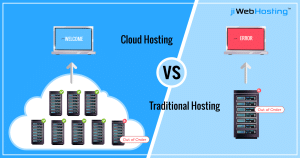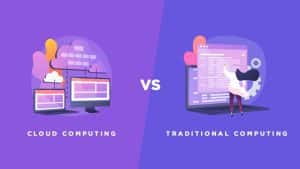Cloud vs. Traditional Server Space: Which is Right for Your Business?
As businesses continue to expand their digital operations, the choice between cloud server space and traditional server space has become increasingly important. Understanding the differences, advantages, and disadvantages of each option is essential to make an informed decision.
What is Cloud Server Space?
Cloud server space refers to virtualized resources provided over the internet. Rather than relying on physical servers, cloud hosting uses a network of interconnected servers to deliver scalable and on-demand computing power.
Key Features of Cloud Server Space
Scalability: Cloud services can scale resources up or down based on demand, ensuring efficient use of resources.
Accessibility: Data and applications hosted on the cloud are accessible from anywhere with an internet connection.
Cost-Efficiency: Pay-as-you-go pricing models allow businesses to pay only for the resources they use.
Redundancy: With data stored across multiple servers, the cloud offers higher uptime and reduced risk of data loss.
Common Use Cases for Cloud Server Space
Startups and small businesses needing flexibility
Companies with fluctuating traffic patterns
Organizations requiring remote access for teams
What is Traditional Server Space?
Traditional server space refers to physical servers hosted on-premises or in a data center. Businesses own or lease these servers and have full control over their operation and maintenance.
Key Features of Traditional Server Space
Customizability: Businesses can tailor servers to their exact specifications.
Control: Full ownership of physical servers ensures complete control over data and operations.
Security: Physical servers allow businesses to implement stringent security measures, reducing reliance on third-party providers.
Common Use Cases for Traditional Server Space

Enterprises with predictable workloads
Businesses in industries with strict data compliance requirements
Organizations seeking dedicated performance and resources
Comparing Cloud and Traditional Server Space
Both cloud and traditional server spaces have their own strengths and limitations. Here’s how they compare across key factors:
1. Cost
Cloud Servers: Typically more cost-effective due to the pay-as-you-go model. No upfront hardware investment is required.
Traditional Servers: Involves significant initial investment in hardware and infrastructure. Ongoing maintenance costs can add up.
2. Scalability
Cloud Servers: Instantly scalable to accommodate changing needs, making it ideal for dynamic workloads.
Traditional Servers: Limited scalability, requiring physical upgrades to handle increased demand.
3. Security
Cloud Servers: Relies on the provider’s security measures. May pose risks for businesses with strict compliance requirements.
Traditional Servers: Allows businesses to implement custom security protocols, offering more control over data protection.

4. Maintenance
Cloud Servers: Maintenance and updates are handled by the service provider, reducing the burden on businesses.
Traditional Servers: Requires in-house IT teams or outsourced support for ongoing maintenance and troubleshooting. https://diversewebsitedesign.com.au/server-space-for-high-traffic-sites/
5. Accessibility
Cloud Servers: Accessible from any location with internet access, supporting remote work and collaboration.
Traditional Servers: Limited to on-premises access unless additional remote solutions are implemented.
Advantages of Cloud Server Space
Cost-effective for businesses with variable needs
Eliminates the need for physical infrastructure
Enables rapid deployment of applications and updates
Supports seamless collaboration and remote access
Advantages of Traditional Server Space
Provides complete control over hardware and data
Customizable to meet specific business requirements
May be more reliable for businesses with stable, predictable workloads
Can ensure compliance with strict data security regulations

Choosing the Right Option for Your Business
Deciding between cloud and traditional server space depends on your business’s unique needs. Consider the following factors:
1. Budget
If your business has limited resources, the cloud’s pay-as-you-go model might be more feasible. However, if you can afford upfront costs and prefer long-term ownership, traditional servers might be better.
2. Workload Type
Dynamic or unpredictable workloads benefit from the scalability of the cloud, while steady workloads may align better with traditional servers.
3. Data Sensitivity
For industries with strict data privacy regulations, traditional servers provide more control and security.
4. Growth Plans
Businesses planning for rapid growth may find the cloud more adaptable to their changing needs.
Hybrid Solutions: The Best of Both Worlds
For businesses unable to choose between the two, hybrid solutions offer a blend of cloud and traditional server space. This approach allows companies to leverage the scalability and accessibility of the cloud while maintaining control over sensitive data with on-premises servers.
Conclusion
The decision between cloud and traditional server space is critical for any business looking to enhance its digital infrastructure. While cloud servers provide unmatched flexibility and scalability, traditional servers offer control and security. By carefully evaluating your budget, workload, and long-term goals, you can select the solution that best supports your business objectives. Whether you opt for cloud, traditional, or a hybrid approach, investing in the right server space will ensure your business thrives in the digital age. For website design south yarra, see here.






